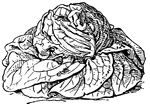
Cabbage Lettuce
Cabbage Lettuce is distinguished by its broad leaves and low spreading habit. It is an annual plant,…

Dieties
A coin engraved with images of Minerva and Jupiter. Minerva was the Roman equivalent to the Greek goddess…

Medal
A medal showing five cities, represented by female figures, offering fruit to a goddess sitting on a…

Chasuble
The principle vestment worn by clergy of the Greek and Roman churches during celebration of mass.

Alphabet of Antiquity
Leading alphabet of antiquity. Included is Punic (Western Semitic from Carthage, North Africa - now…
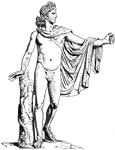
Apollo of the Belvedere - Front View of Statue
Illustration of the famous statue Apollo Belvedere. Created circa AD120-140, the statue depicts Apollo…

Greek War-Ship with Three Rows of Oars
Illustration of a Greek war-ship from the 5th century BC. There are two masts, a large decorative bird…
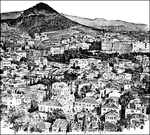
The City of Athens Circa 1912
The city of Athens, Greece as it looked circa 1912. The mountain in the background is Mount Lycabettus.…

The Victors of Salamis by Fernand Cormon
Illustration of a painting of the ancient Greeks returning victorious from the Battle of Salamis against…

The Acropolis of Athens - Restoration of the Propylaea
Illustration of the Acropolis restored to what it may have looked like when originally completed. The…
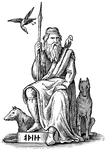
Woden or Odin, Germanic and Norse God, Seated with His Wolves and Crows
Illustration of the god called Woden in Germanic mythology and Odin in Norse mythology. Much like Zeus…

Thor Wielding Mjölnir, Standing on a Cloud
The Norse god Thor flings his hammer, Mjölnir, over his head. He is standing on a cloud and his name…
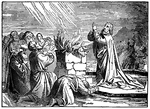
Elijah Praying to God to Set Fire to His Altar in Front of the Prophets of Baal
"Then the fire of Jehovah fell, and consumed the burnt-offering, and the wood, and the stones, and the…
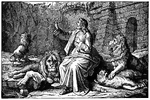
Daniel Sits Safely among the Lions in the Den
"Then the king arose very early in the morning, and went in haste unto the den of lions. And when he…
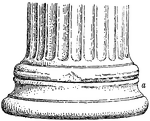
The Base of an Ionic Column at the Erechtheum
The base of the column, torus, displays a concave molding called a scotia. This type of base was not…

Silenus - Marble Sculpture
"In Greek mythology, a divinity of Asiatic origin, the foster-father of Bacchus, and leader of the satyrs,…
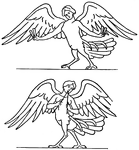
Sirens on a Greek Funeral Marble
"In Greek mythology, one of two, or three, or an indeterminate number of sea-nymphs who by their singing…
![Drawing of the Diana of Versailles, a 2nd-century Roman version in the Greek tradition of iconography. In Roman mythology, Diana ([djana]) was the goddess of the hunt, the moon and childbirth, being associated with wild animals and woodland, and having the power to talk to and control animals.](https://etc.usf.edu/clipart/188200/188203/188203-diana-of-versailles_mth.gif)
Diana of Versailles
Drawing of the Diana of Versailles, a 2nd-century Roman version in the Greek tradition of iconography.…

Spades - a Collection of Various Types
"A tool for digging and cutting the ground, having a rather thick iron blade, usually flat, so formed…

Sphinx of Lanuvium
A Graeco-Roman marble table support in the shape of a sphinx. It was found in the ruins of the Villa…
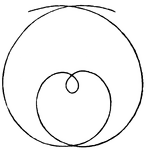
Archimedean Spiral
Illustration of a spiral named after the 3rd century BC Greek mathematician Archimedes.
